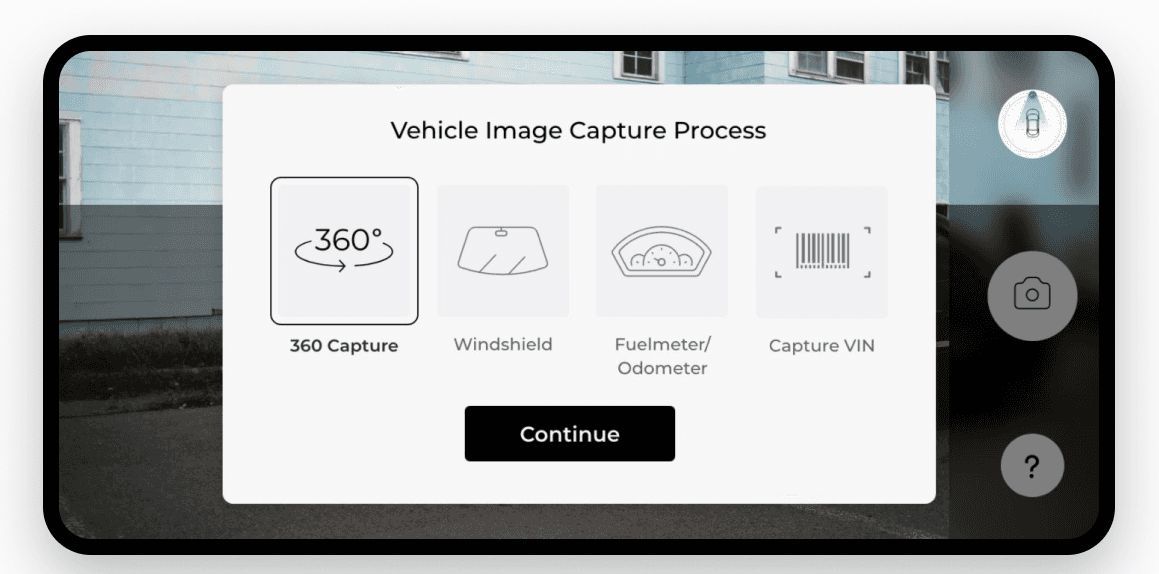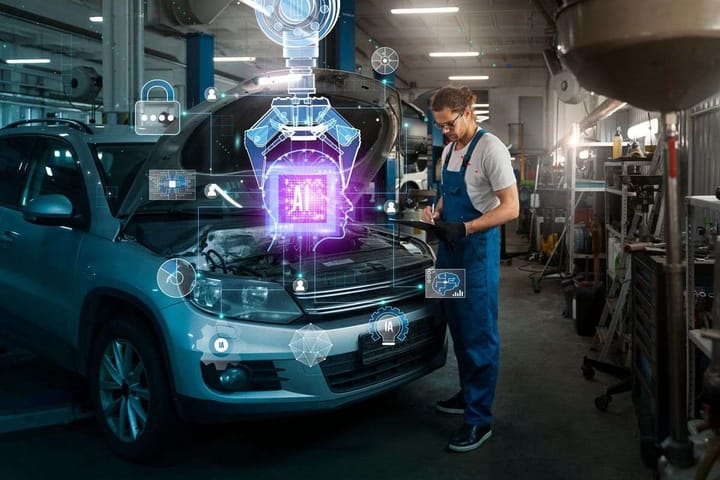Fraud detection using AI for car damage assessment | Inspektlabs
Image/video analysis using AI for fraud detection has become feasible after the recent major improvements in computer vision technology. Learn more about how AI can help detect and prevent car inspection fraud.

5-10% of insurance claims are considered fraudulent, costing US insurers more than USD 40 billion every year (McKinsey report).
In addition to insurers, mobility players such as car rental companies face fraud during return of the car. Customers tend to hide damages during car returns which leads to conflicts with end customers. On the other hand, customers often feel cheated when they are overcharged for damaging the car.
Similarly, during buying/selling of used cars, the owner of the car has an incentive to hide damages to inflate the sales value of the car
Traditional method of fraud detection focuses on creating red flags and business rules based on historical data. Image/video analysis using AI is a relatively new method for fraud detection that has become feasible after the recent major improvements in computer vision technology.
Vehicle Inspection Fraud Use Cases
Fraud during motor insurance pre-inspection, or underwriting
A customer purchasing vehicle insurance policy tends to hide pre-existing vehicle damages during the manual inspection/video-based assessment. This is done to avoid getting rejected, or to make a claim on pre-existing damages after the insurance is issued.
Fraud during a motor insurance claim
During damage assessment, the customer includes damages that existed before the accident (old or prior damages) occurred to claim a higher amount from the insurance company.
Fraud during a car rental drop-off
The customer hides damages done to the car during the rental period to avoid paying the penalty to the rental company.
In some cases, the rental agency exaggerates minor damages that are detected after a rental to draw a heftier fine from the renter, and also receive a higher claim amount from the insurance company.
Car auction fraud
The seller hides damages during the video/photo-based inspection that is done to assess the car's condition. They do this to falsely inflate the price of the car being auctioned.
While the use-cases listed above are the most common ones, any situation that leads to an inspection or assessment of a vehicle creates potential chances for fraud. Vehicle insurance fraud also includes misrepresenting data on insurance applications, inflating insurance claims, staging accidents to make an insurance claim, faking or lying about the severity of physical injuries or vehicular damage to inflate claim value, falsely reporting a stolen vehicle, etc. Fortunately, AI delivers a solution.
Fraud Detection Using Inspektlabs AI - Preventing Vehicle Inspection Fraud
The introduction of modern technology like Artificial Intelligence and the digitalization of fraud detection processes is a giant step forward in preventing auto inspection fraud.
Inspektlabs, for example, has been helping insurance and mobility companies detect and prevent motor insurance fraud with an AI-enabled platform. The platform delivers multiple features such as video-based auto damage detection, detection of old or prior damages, identifying damage cover-ups with stickers, fraud detection through metadata, etc.
While the following modules are specific to Inspektlabs, this is how AI can help detect and prevent car inspection fraud:
1. Tamper Proof Web App
During a video inspection, the camera feed from the web app is directly transmitted to the platform in real-time, where the AI system assesses car damages. This method prevents any tampering of photos or videos by the user. Traditional inspection apps save the assessed photos and videos on a local system, which is susceptible to tampering. For example, customers can edit the videos or images to hide damaged parts. Inspektlabs' video-based auto damage detection system transmits the phone camera feed directly to the backend platform preventing any middleman tampering.
2. Accurately Differentiate Old/New Damage and Single/Multi-Point Impact
Identification of damages that should be included in the current claim is important to correctly determine repair estimates. Including damages from prior accidents inflates the claim amount, which customers sometimes take advantage of. Some common methods of fraud are:
- Vehicle owners falsely include past damage to inflate the claim amount.
- Single point accidents are sometimes shown as multi-point impact accidents by including past damages.
- Owners exacerbate minor damages with the help of external workshops to show them as major damages and claim more money.
- Agents of rental cars handling the drop-off damage assessment include prior damages in the assessment to penalize the customer with a higher amount.
It's evident that the value of the claim is greatly influenced by the number of damaged parts and the severity of the damages. This is why having the tools to differentiate between old and new damages is important.
Inspektlabs' AI-based auto damage inspection solution can automatically differentiate between old and new damages. It also has the capability to differentiate between single-point and multi-point damages to generate an accurate assessment report. The AI platform uses smart accidental damage pattern analysis to rule out damages that are not associated with the accident being assessed.
3. Ensure all Parts are Covered and Inspected
A key activity in the inspection process is capturing each zone of the vehicle on video or photo along with the necessary documents, chassis number, and an odometer reading.
In the case of traditional video inspection, the agent has to check all timestamps to ensure all zones are captured, and during a photo inspection, the agent has to check all images in the batch before moving on to the next batch. This is a time and effort-heavy task and is prone to human errors.
An AI-enabled web-based solution like Inspektlabs, on the other hand, ensures all zones are captured during a video inspection by guiding the user in real-time as they use the device to capture the video. This ensures no zone is mistakenly or deliberately missed.
Inspektlabs' 360-degree video recording solution analyzes the video to check:
- 360-degree views of the car
- odometer reading
- fuel-meter reading
- chassis number
- vehicle documents.
It also checks to ensure the assessment video is not blurred and is shot in good lighting conditions to avoid ambiguity in future reviews.
4. Determine the Cause of Damage
Knowing the cause of damage is not just required for settling a claim, it is also an important factor in defining the severity of the damage. Without knowing the exact cause of the damage, the insurer cannot determine if the damage was indeed caused because of the accident or falsely exaggerated later. The cause is generally deduced from visual cues like the damage pattern. A car having very close and minor dents along with a broken front and/or back windshield was probably hit by a hail storm.
A car that crashed into a pole will have its front bumper folded inwards around the pole, and the bonnet will be severely damaged.
When a car hits a person, the damage to the front bumper is not very evident, but the hood takes damage, and there are chances of the windshield cracking.
Some damages are minor spot damages and isolated, for example, if a stone or small rock damages the car.
By analyzing visual cues in the captured 360-degree video, the AI software is able to determine the cause and severity of the damage.
5. Accurate Injury Reporting
Since vehicle insurance companies also cover physical injuries and death, determining the magnitude of the accident is important because it helps corroborate the severity of the injuries.
Analyzing damage patterns also helps eliminate any false claims by correlating the damaged area to the injured area. For example, if the car has dents only on the passenger side but the driver claims they have received surface-level injuries during the accident, they are probably lying to claim a higher insurance amount.
While still in the development stage, Inspektlabs' AI can use the analyzed image patterns to predict the probability and severity of physical injuries in the car damage assessment report.
6. Tamper Proof Video Inspection
An AI-based video recording assessment is more accurate than a manual or photo-based inspection. It reduces the chances of fraud to a much greater extent by capturing a more comprehensive view of the vehicle. Some advantages of using Inspektlabs' 360-degree video recording solution for damage assessment:
- Records all vehicle zones, detects damages, and assigns damages to parts automatically.
- Videos are much harder to tamper with, and the report's authenticity can be trusted.
- A 360-degree video gives the AI platform more perspectives, increasing the accuracy of fraud detection.
- Unlike in a photo or manual inspection, certain parts or areas of a car cannot be skipped during a real-time live video recording.
7. Detection of Car Switching during Video Capture
Switching cars in between a photo or video inspection is a common method of hiding damages. A person who intends to hide existing damages in the car being assessed will switch cars when shooting the section of the car that is damaged. In case of a video, the person will cover the camera with a finger or pause recording and move over to another car.
Inspektlabs' AI-based video inspection completely prevents this from happening. The video is transmitted to the backend AI system in real-time, as it is being shot so the user cannot pause or tamper with it. The AI also detects any discrepancies in the video, like sudden movements that blur the image or if the camera is covered with a finger, and flags this as an anomaly.
8. Metadata Analysis
Videos carry embedded metadata like GPS coordinates, timestamps, media encoder data, etc., that cannot be tampered with. Even if the original video is somehow corrupted, the metadata can be analyzed to get valuable information that will flag a tampered video.
In traditional vehicle damage assessment processes, the metadata of the car inspection video is not checked, and edited videos can slip through as genuine assessments.
However, with an AI solution, a tampered video can't go unnoticed because the AI analyzes the video's metadata to detect any anomalies that could point to video tampering. For example, if the GPS location in the video's metadata and the car's location are not the same, it indicates the user sent a fake or tampered video. If there are multiple timestamps with breaks in between, it indicates the video has been clipped. An AI damage assessment solution can detect and deduce these anomalies.
9. Match VIN and License Plate
The VIN and registration number are unique for a vehicle and are good indicators of authenticity during an assessment. An agent or user recording an inspection video is required to also include the VIN and license plate in the shot to prove the correct car is being inspected.
However, since videos can be tampered with, a video that is shot by the user or an agent on their phones cannot be trusted even if it has the VIN and license plate in the shot.
An AI-based car damage assessment platform solves this problem. Since the video is transmitted to the platform in real-time, the user cannot doctor the video. The agent or user is required to show the VIN and license plate at the start of the video, and it can then be assumed that the rest of the video is legitimate.
The AI solution also uses OCR to read text from the license plate, VIN, documents, and odometer and then matches it to the documents on file.
10. Detect Stickers
Pasting stickers to cover damages is a common method of defrauding an insurance or car rental company. People either cover damages completely or add stickers that make it difficult for an auto damage detection tool to detect damages.
On the flip side, people making claims sometimes add stickers that simulate damages, and these get picked up by the auto damage detection tool, thus increasing the claim's value.
Inspektlabs' AI is designed to detect stickers and deduce their purpose on the car - whether for aesthetics or to commit fraud.
Conclusion
The auto insurance and mobility players such as car rental and car auction players deal with a lot of fraud pertaining to car inspections.
However, advancements in technology have made the task of preventing auto inspection fraud easier than it used to be. Companies can now do away with manual processes and legacy technology, which are slow and error-prone, and implement modern AI-based solutions that automate and accelerate the entire inspection process.



